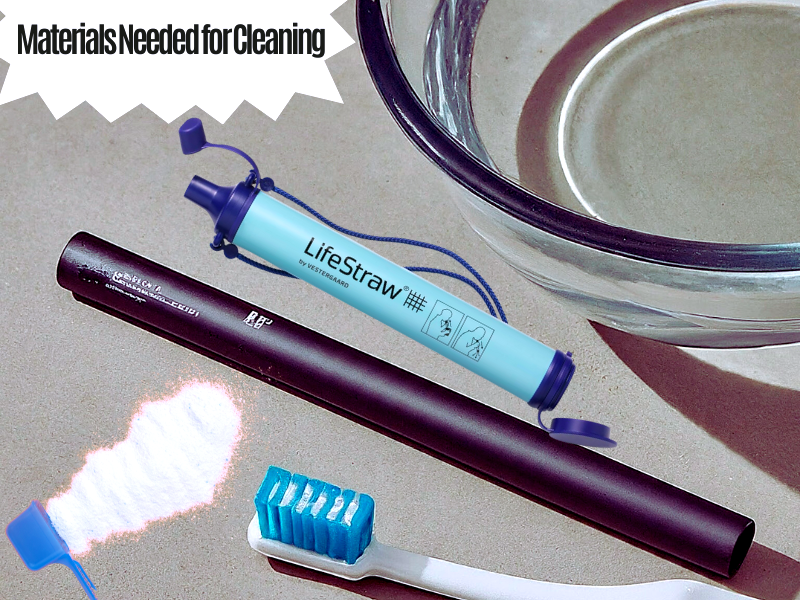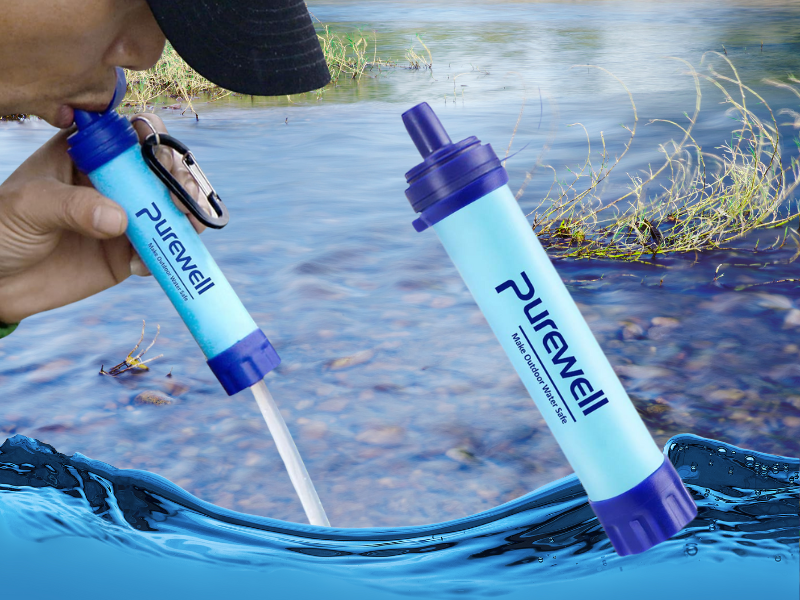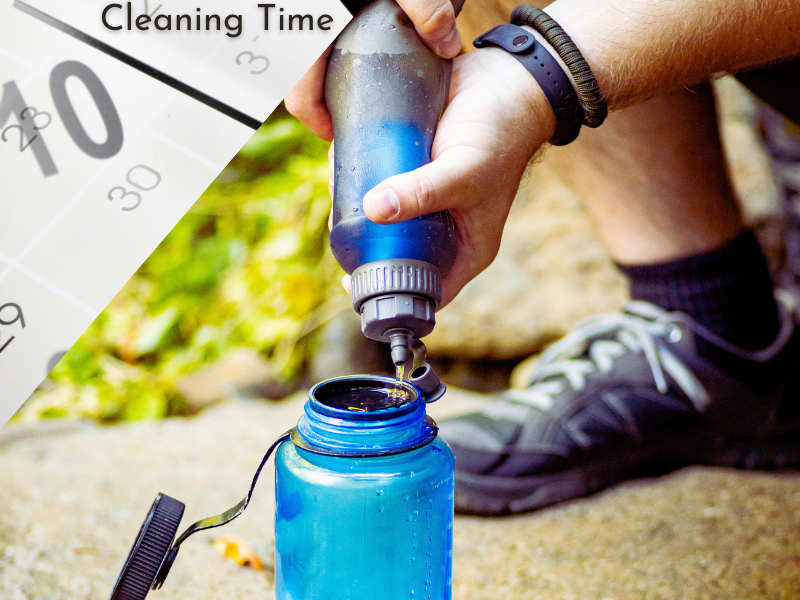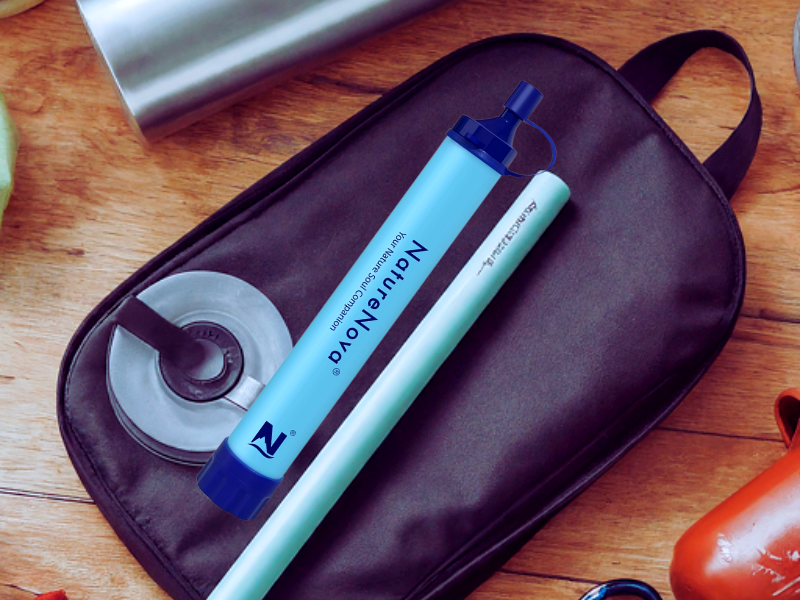- Cleaning a filter straw is essential for safe drinking water.
- Use warm water, dish soap, and a bleach solution for thorough cleaning.
- Regular maintenance ensures the longevity and effectiveness of your filter straw.
Filter straws are a lifesaver, especially when you're out camping or hiking. They allow you to drink water from natural sources without worrying about contaminants. But, just like any other tool, they need regular cleaning to function effectively. So, how do you clean a filter straw? Let's dive into the nitty-gritty details.
Why Cleaning Your Filter Straw is Crucial

Cleaning your filter straw isn’t just about looking good. It’s about every sip being safe. Over time, dirt, bacteria, and other contaminants can build up inside the straw, compromising its ability to filter water. It's not what you want when you’re out in the wild. Plus, a clean filter straw means the water tastes fresh. No one likes the taste of stale or contaminated water. Regular cleaning keeps the taste and quality of the water and makes your outdoor adventures more enjoyable.
Materials Needed for Cleaning

Before you start cleaning, gather all your materials. You’ll need warm water, dish soap, bleach solution, and a small brush. These are all at home, so the process is easy and painless. Warm water helps loosen any dirt or debris stuck inside the straw. Dish soap breaks down oils and other contaminants. Bleach solution is for disinfecting the straw so all bacteria are killed. A small brush is for scrubbing the inside of the straw, getting into areas that are hard to reach.
Step-by-Step Cleaning Process
Step 1: Disassemble the Filter Straw
Rinse each part of the filter straw with warm water. This will remove any loose dirt or debris. Make sure to rinse both the inside and outside of the straw. If using tap water, make sure it’s clean and free of contaminants.
Step 2: Rinse with Warm Water
Rinse each part of the filter straw with warm water. This will remove any loose dirt or debris. Make sure to rinse both the inside and outside of the straw. If using tap water, make sure it’s clean and free of contaminants.
Step 3: Use Dish Soap
Apply a small amount of dish soap to the brush and scrub the inside of the straw. The dish soap breaks down oils and other contaminants that may be stuck inside. Make sure to scrub all parts of the straw, including the mouthpiece and cap.
Step 4: Rinse Again
After scrubbing, rinse each part of the filter straw with warm water. This helps in removing any soap residue. Make sure to rinse thoroughly to ensure that no soap is left inside the straw.
Step 5: Disinfect with Bleach Solution
Prepare a bleach solution by mixing one part bleach with ten parts water. Soak each part of the filter straw in the bleach solution for about 5 minutes. This helps in disinfecting the straw, ensuring that all harmful bacteria are eliminated.
Step 6: Rinse with Cold Water
After disinfecting, rinse each part of the filter straw with cold water. This helps in removing any bleach residue. Make sure to rinse thoroughly to ensure that no bleach is left inside the straw.
Step 7: Dry Completely
Allow each part of the filter straw to air dry completely. Make sure that all parts are completely dry before reassembling the straw. This helps in preventing the growth of mold and mildew inside the straw.
Tips for Maintaining Your Filter Straw

Maintenance is vital to extending the life and effectiveness of your filter straw. Clean your filter straw after every use, especially if you use it to drink from natural sources. This will prevent dirt and bacteria buildup inside the straw. When not in use, keep your filter straw in a clean, dry place to prevent mold and mildew growth. Make sure to keep all parts together so you don’t lose any.
Common Mistakes to Avoid
One mistake is not rinsing the filter straw thoroughly after cleaning. Soap and bleach residue can affect the taste of the water and can be harmful if ingested. Make sure to rinse each part thoroughly with clean water. Another mistake is not drying the filter straw completely before storing it. Moisture can cause mold and mildew growth inside the straw and render it ineffective. Make sure to air-dry each part of the straw before reassembling and storing it.
How Often Should You Clean Your Filter Straw?

The frequency of cleaning depends on how often you use the filter straw. If you use it daily clean it after every use. This will prevent dirt and bacteria from building up inside the straw. If you only use the filter straw occasionally clean it before and after each use. This will ensure the straw is clean and ready to use whenever you need it.
Can You Use a Dishwasher?
Some filter straws are dishwasher safe others not. Check the manufacturer’s instructions to see if your filter straw can be washed in a dishwasher. If it’s dishwasher safe, place the parts on the top rack and run them normally. If your filter straw is not dishwasher safe follow the manual cleaning process above. Using a dishwasher for non-dishwasher-safe filter straws can damage the components and render them ineffective.
What to Do If Your Filter Straw Gets Clogged
If your filter straw is clogged try rinsing with warm water. This will loosen any dirt or debris stuck inside the straw. If rinsing doesn’t work use a small brush to scrub the inside of the straw. If the clog persists, soak the filter straw in a bleach solution for 5 minutes. This will break down any stubborn contaminants. Rinse thoroughly with cold water after soaking to remove bleach residue.
How to Store Your Filter Straw

When not in use, keep your filter straw in a clean, dry place. Make sure to keep all parts together so you don’t lose any. If possible, store the straw in a case to prevent damage. Don’t store the filter straw in a damp or humid environment. Moisture can cause mold and mildew growth inside the straw, rendering it ineffective. Make sure all parts are dry before storing.
The Importance of Replacing Your Filter Straw
The filter in your straw will wear out over time and become less effective. You should replace the filter regularly so you’re always drinking clean and safe water. Check the manufacturer’s instructions for replacement frequency. If you notice a change in the taste or flow of the water, it’s time to replace the filter. A worn-out filter can make the water unsafe to drink.
Summary
Cleaning your filter straw is essential for ensuring that you always have access to clean, safe drinking water. By following the steps outlined above, you can keep your filter straw in top condition, ready for your next adventure. Regular maintenance and proper storage are key to ensuring the longevity and effectiveness of your filter straw.
Keep up with the latest water filter tips and offers, and subscribe to our newsletter today!
FAQs
How often should I clean my filter straw?
Clean your filter straw after each use especially if you used it to drink from natural sources. This will prevent dirt and bacteria buildup inside the straw.
Can I put it in the Dishwasher?
Some filter straws are dishwasher safe others not. Check the manufacturer’s instructions to see if your filter straw can be washed in a dishwasher. If it’s dishwasher safe place the parts on the top rack and run a normal cycle.
What to do if clogged?
If your filter straw is clogged try rinsing with warm water. If rinsing doesn’t work use a small brush to scrub the inside of the straw. If still clogged soak the filter straw in a bleach solution for 5 minutes and rinse with cold water.








